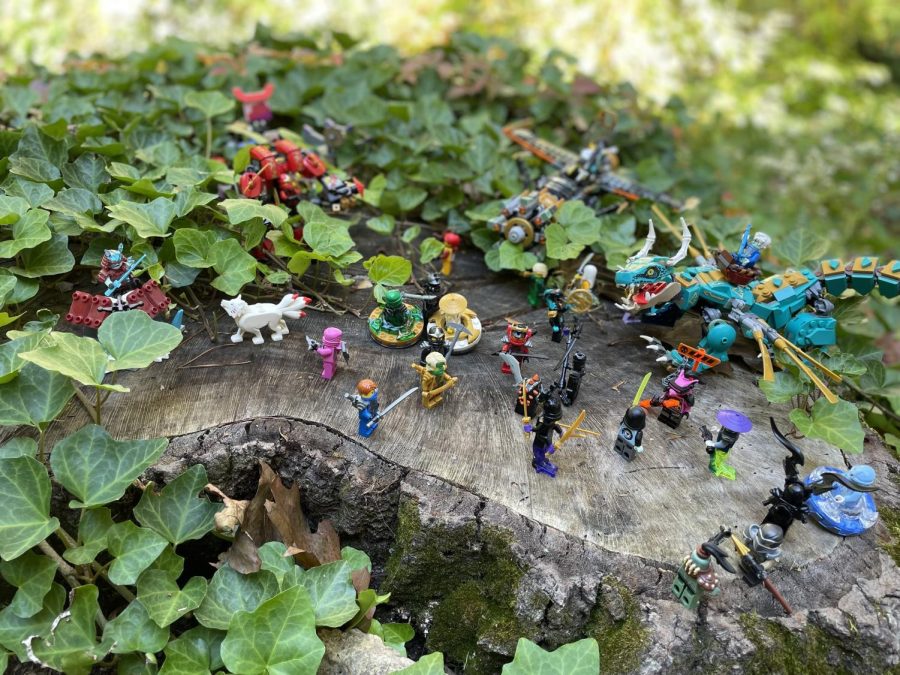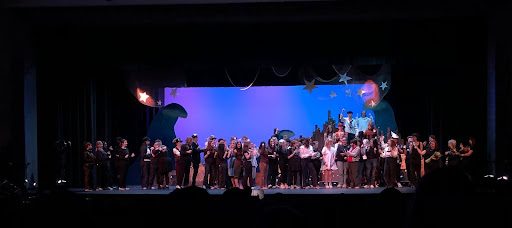A legacy built brick by brick
Photo courtesy of Jensen Kugler
Through the release of Crystalized, more than 400 different playsets and 700 different minifigures have been produced under the Lego Ninjago theme, allowing fans of all ages to hold their own Spinjitzu tournaments, reenact epic battles from the show, or even just display their favorite ninja in interesting places.
After more than 11 years and 200 episodes, the animated television show Ninjago has officially ended, leaving behind a lasting legacy as one of Lego’s most successful original themes.
Four teenage ninja—Kai, Jay, Zane, and Cole—were introduced to the world in early 2011. Taught by the wizened Sensei Wu, the ninja of Fire, Lightning, Ice, and Earth were pitted against Lord Garmadon and his Skulkin army in a two-episode pilot that set the stage for more than a decade of fantastical adventures, while also sticking in people’s minds on its own right. Of 45 students polled, more stated that Jay was the favorite ninja than any other character, but the next most popular ninja were Kai, Zane, and Cole, respectively. Only 17.8 percent preferred one of the later character additions, Lloyd or Nya, while an even smaller 6.7 percent are diehard fans of the ninja-adjacent Dareth.
“[Dareth is a] W ninja,” said senior Ethan Le. “Brown ninja, best ninja. He’s the only one true ninja.”
Regardless of which ninja one liked best, the show quickly managed to catch on with Lego’s target demographic: children aged six to 11. At its peak, Ninjago was actually the highest rated television show in its time block for that demographic, but it would also maintain a fairly strong contingent of older fans throughout its lengthy run; many of whom started watching as children and stuck with it as the ninja grew up alongside them.
“I don’t know if this is embarrassing, but I kind of didn’t grow out of it,” said senior Leana Gyalokay. “I still really like Ninjago a lot; like, I look at Ninjago art all the time. I have not been watching shows lately because I just don’t have the time, but I still really like [Ninjago]. I would totally watch it if I could.”
Whether due to changing interests, loss of free time, or unawareness that the show was even still running, Ninjago remains a distant memory for most. Only 57.9 percent of the aforementioned students polled watched past season two, Legacy of the Green Ninja. Those first two years were likely the show’s peak in cultural relevance, but some fans who stopped watching then have still kept an eye out over the years for news and updates.
“I witnessed how the whole series changed through both YouTube, as well as watching the Lego sets change every year,” said Le. “There’s a lot of interesting ideas with Ninjago, I mean, ghosts [were] maybe not that original, but flying sky pirates, I’m pretty sure that’s pretty unique and original. Going into a whole tech-realm, that was also pretty original of them. So yeah, I think I like the [changes], and it’s definitely a series worth watching because of its unique ideas.”
Ultimately, even if most students weren’t able or willing to stick through the soft reboots, animation studio switches, episode format shifts, and voice actor changes, Ninjago was still a galvanizing program for this generation. A childhood relic that countless students still hold dear to their hearts, very few animated television shows have managed to reach as many people as Ninjago. Not only was it by far the longest-running Lego television show, it was the longest-running show in the history of Cartoon Network.
Ninjago taught its audience that “ninja never quit,” and regardless of whether or not the fans have watched the show in its entirety, that is a lesson they will never forget.






